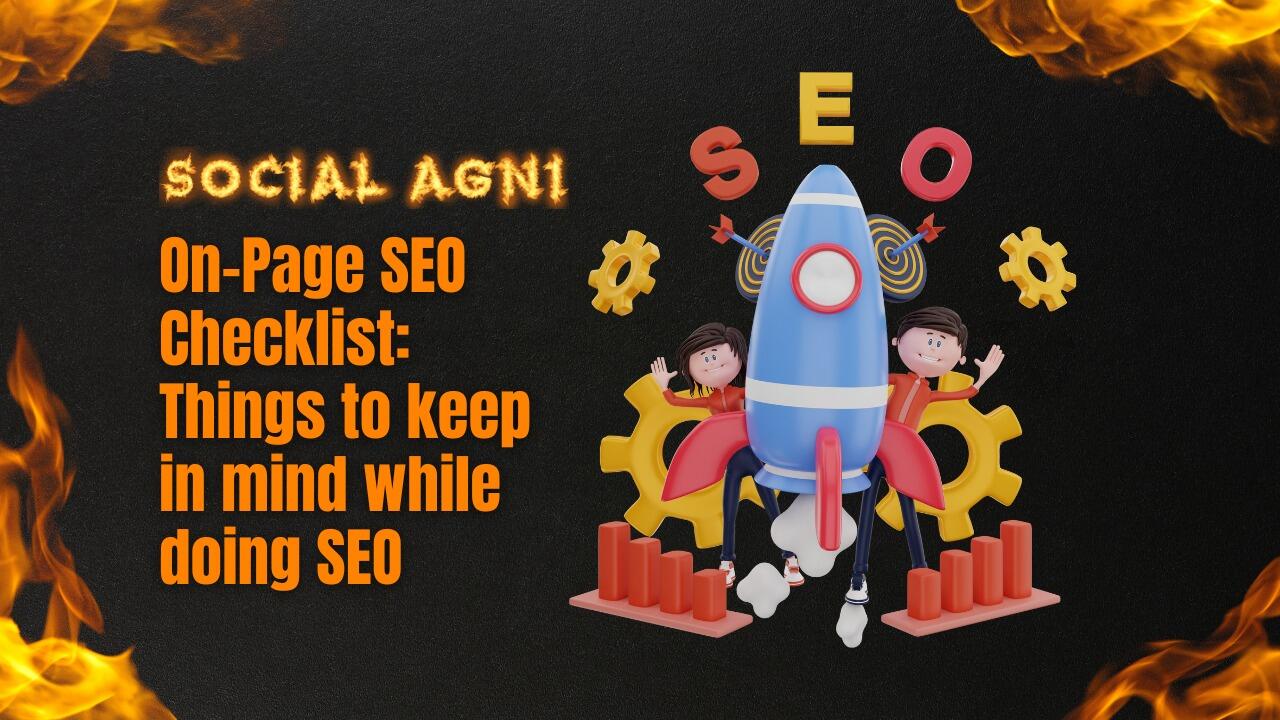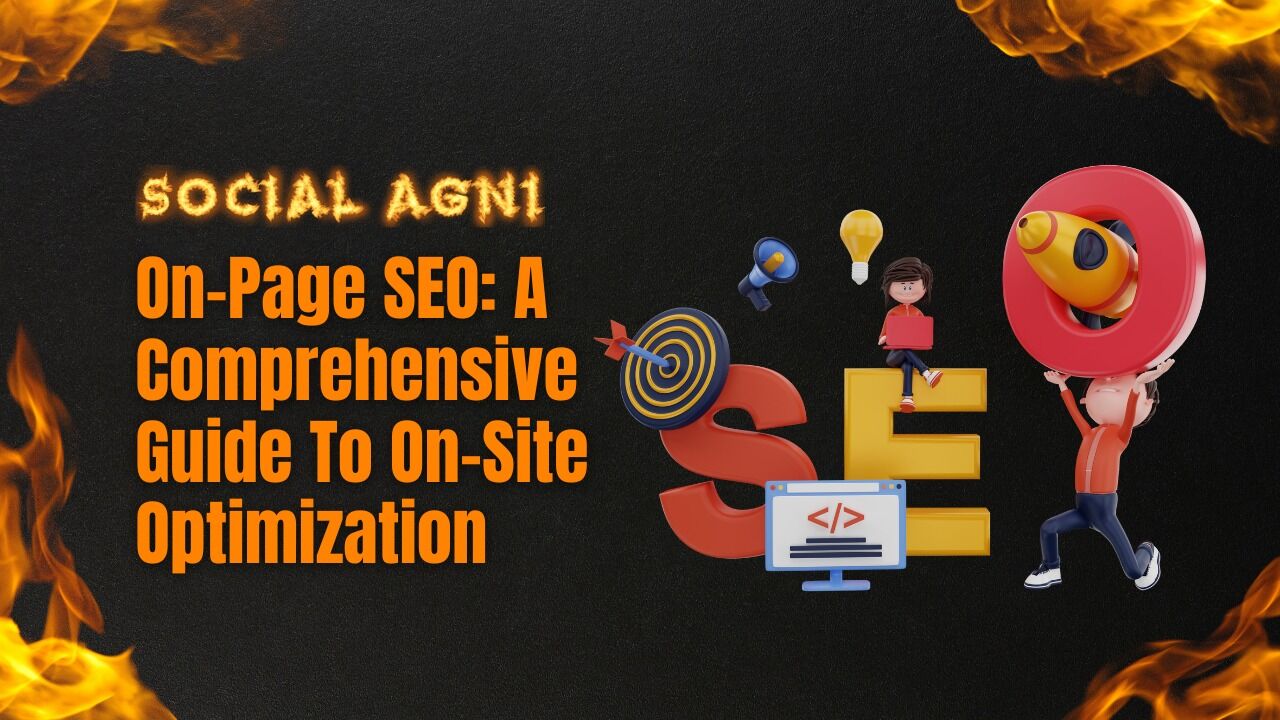You might have the best website in the world, but if nobody knows about it, then what’s the point? Search Engine Optimization (SEO) is how you make sure your site comes up when people search for relevant keywords on Google, Bing, and other search engines. This can be a difficult and time-consuming process, but our on-page SEO checklist will make it easier for you! How On-Page SEO benefits you? There are many benefits to On-Page SEO, including: Increased traffic: By optimizing your website for search engines, you can increase your website’s visibility in search results, which can lead to more clicks and more traffic. Improved rankings: Optimizing your website’s content and structure can help improve your website’s Rankings in search results, which can lead to more traffic. Greater ROI: Since On-Page SEO can help improve your website’s visibility and Rankings, it can also lead to a higher ROI from your SEO campaigns. Increased brand awareness: By optimizing your website for search engines, you can help increase your brand’s awareness among potential customers who are searching for relevant keywords. Better user experience: By optimizing your website for search engines, you can make it easier for users to find the information they need on your site, which can improve their overall experience with your site. What to Avoid While Doing On-page SEO a) Don’t stuff your keywords Stuffing your keywords into your content in an attempt to game the system will not only turn off your readers, but it will also get you penalized by Google. A better approach is to focus on creating quality content that naturally incorporates your target keywords. b) Don’t neglect your title tag Your title tag is one of the most important elements on your page, so don’t neglect it! Make sure your title is clear, concise, and includes your target keyword. c) Don’t forget about meta tags Meta tags are another important element of on-page SEO. Be sure to include relevant and keyword-rich meta tags on each page of your site. d) Don’t overlook Alt text Alt text is used to describe images for those who are unable to see them. This is important for both accessibility and SEO purposes. Be sure to include Alt text for all images on your website. e) Don’t forget about internal linking Internal linking is important for both usability and SEO purposes. Be sure to include links to other pages on your website within your content. This will help users navigate your site and help search engines crawl your pages more effectively. f) Don’t forget to optimize your URLs Your URL should be clear, concise, and include your target keyword. This will help both users and search engines understand what your page is about and make it more likely that your page will rank for that keyword. g) Don’t forget about social media Social media is important for marketing as well as for SEO purposes. Be sure to include links to your social media profiles on your website and share your content on social media. This will help you reach a larger audience and potentially increase your search engine ranking. h) Don’t neglect your mobile website With more and more people using mobile devices to access the internet, it’s important to make sure your website is optimized for mobile. This includes having a responsive design and ensuring that your content is easy to read on a small screen. i) Don’t forget about local SEO If you’re targeting locally, be sure to optimize your website for local SEO. This includes adding your business to local directories, claiming your Google My Business listing, and adding relevant keywords to your website. j) Don’t forget about voice search Voice search is an increasingly popular way to search the internet, so it’s important to optimize your website for voice search. This means using natural language and long-tail keywords throughout your content. On-Page SEO Checklist On-page SEO is the process of optimizing your website’s pages and content to make them more search engine friendly. This includes things like choosing the right keyword phrases to target, making sure your pages are well-structured and easy to read, and ensuring that your site is free of technical errors. To help you optimize your site for better search engine visibility, we’ve put together this on-page SEO checklist. Use it as a guide when improving your own website, and you should see a noticeable difference in your search engine rankings. 1. Choose the right keyword phrases The first step in any on-page SEO campaign is keyword research. You need to find out what keywords or key phrases people are using to search for businesses like yours. Once you know this, you can then start incorporating these keywords into your website’s content, title tags, meta descriptions, and other places where they’ll be noticed by search engines. 2. Use keywords throughout your content: Once you have targeted a couple of valuable keywords, make sure to use them in your content. Place them in the title, in the body, and in the tags and metadata. 3. Optimize your title tags and meta descriptions Your title tags and meta descriptions are two of the most important elements on your website when it comes to on-page SEO. These are the short descriptions that appear in search engine results, so it’s important to make them as keyword-rich and interesting as possible. Write headlines that are clear and concise and include relevant keywords. Likewise, make sure your meta descriptions are interesting and informative so that people will want to click through to your site. 4. Structure your pages well Search engines like websites that are well-structured and easy to navigate. This means using things like headings and subheadings to break up your content, and using internal linking to help search engines understand the relationship between your pages. 5. Make sure your website is mobile-friendly With more and more people using mobile devices to access the internet, it’s important to make sure your website is optimized for these
SEO is a necessary component of any digital marketing strategy. However, with the ever-changing landscape of search engines, it can be difficult to keep up with the latest trends and best practices. This comprehensive guide covers everything you need to know about on-page SEO, from keyword research to optimizing your website content. By following the tips in this guide, you can ensure that your website is optimized for search engines and easy for your users to navigate. What is on-page SEO? On-page SEO is the process of optimizing a website for search engines. It includes optimizing the website’s title, description, keywords, and other factors that influence search engine ranking. On-page SEO is important because it helps search engines understand what your website is about and how relevant it is to certain keywords. This allows them to rank your website higher in search results, which leads to more traffic and visibility for your business. There are many different techniques that can be used to optimize a website for search engines. However, not all of them are equally effective. Some common on-page SEO techniques include optimizing title tags, meta descriptions, and header tags; using keyword-rich content; and creating internal links. The best way to optimize your website for search engines is to hire a professional SEO company. They have the experience and expertise necessary to get your website to the top of the search results. The benefits of on-page SEO On-page SEO is one of the most important aspects of search engine optimization. By optimizing your website for the search engines, you can increase your visibility and draw more traffic to your site. There are many benefits to on-page SEO, including: 1. Increased traffic: One of the main benefits of on-page SEO is increased traffic. By optimizing your website for the search engines, you can improve your ranking in the search results and attract more visitors to your site. 2. Improved usability: On-page SEO can also improve the usability of your website. By making your website more accessible to the search engines, you can make it easier for users to find the information they are looking for. 3. Improved conversion rates: In addition to increased traffic, on-page SEO can also lead to improved conversion rates. By making your website more relevant to the searcher’s needs, you can persuade them to take action on your site, whether it’s subscribing to your newsletter or making a purchase. 4. Greater brand awareness: On-page SEO can also help you build greater brand awareness for your business. By optimizing your website for the search engines, you can ensure that your website appears in the search results when people are searching for products or services related to your business. This can help you attract new customers and grow your business. 5. Competitive advantage: On-page SEO can give you a competitive advantage over other businesses in your industry. By optimizing your website for the search engines, you can make it easier for potential customers to find you and learn about your business. This can help you win more business and stay ahead of your competition. On-page SEO is an important part of search engine optimization. By optimizing your website for the search engines, you can increase your visibility, draw more traffic to your site, and improve your conversion rates. On-page SEO tips and tricks If you’re looking to improve your on-page SEO, this comprehensive guide will give you all the tips and tricks you need. From optimizing your title and meta tags to using the right keywords and phrases, we’ll cover everything you need to know to get your pages ranking higher in search engine results. So let’s get started! 1. Optimize Your Title And Meta Tags Your title and meta tags are some of the most important elements on your page when it comes to SEO. That’s because they help search engines understand what your page is about, and they also play a role in how your page appears in search results. Make sure that your website’s title tag and meta tags are accurate, unique, and descriptive, and include the keyword or phrase that you’re trying to rank for. And while there’s no perfect length for meta tags, a good rule of thumb is to keep them under 155 characters. 2. Use The Right Keywords And Phrases Use keyword-rich titles and descriptions for your blog posts and pages. Choosing the right keywords and phrases is essential for on-page optimization. When deciding which words to use, think about what potential customers might be searching for when looking for a business like yours. Then, incorporate those keywords throughout your content, including in the title , meta tags, and body text. Remember to use keywords naturally, though, as search engines will penalize you if they think you are keyword stuffing. A good rule of thumb is to use a keyword or phrase once for every 100 words of content. When creating your website’s title and description, be sure to use keywords that accurately describe your site. This will help search engines index and rank your site more effectively. 3. Optimize Your Images Images can also help improve your SEO, but only if they’re properly optimized. Make sure to include descriptive file names and alt text for all of your images, and compress them so that they don’t slow down your page loading time. 4. Use Internal and External Links Linking to other pages on your website can also help with SEO. Not only does it help search engines understand the structure of your website, but it also helps users navigate your site more easily. Create internal links between your website’s pages. When linking to other pages, use keywords or phrases in the anchor text to help improve the target page’s ranking, and also use external linking to high-quality websites. 5. Create Unique And Compelling Content Last but not least, one of the best ways to improve your on-page SEO is to create unique and compelling content. Write blog posts that are

